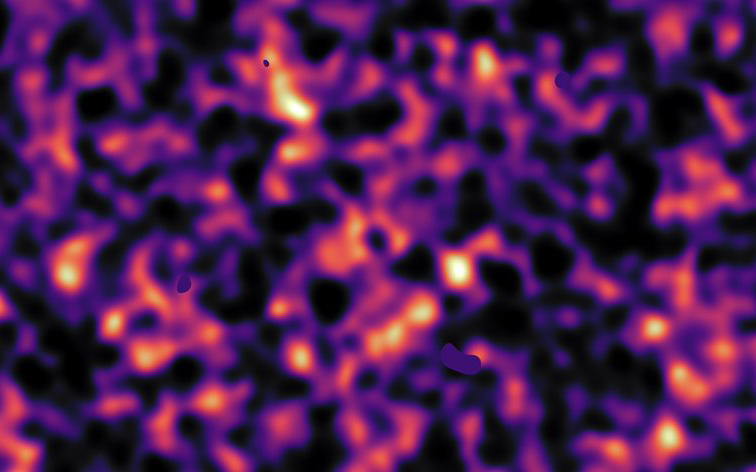The Dark Side of Things

In the 1970s, astronomers discovered something strange and surprising: There is not nearly enough visible matter in galaxies to keep them together. Scientists observed stars at the edges of galaxies moving so fast that they should have flown off into space long ago.
Astronomers concluded that some mysterious “dark matter” must exist alongside visible matter to gravitationally yank stars toward the center of their galaxy. Moreover, calculations suggested that this dark matter must outweigh so-called normal matter by more than five times. The discovery profoundly challenged physicists’ view of the universe.
Yet a half-century later, no one knows what exactly dark matter is. Promising candidate particles have been ruled out, but none has been found.
Searches for heavier forms of dark matter, often called “weakly interacting massive particles,” have come up empty. So theoretical physicists have gotten interested in another possibility: ultralight dark matter. Ultralight dark matter would consist of extremely tiny particles — much lighter even than an electron — with enormous wavelengths as large as a galaxy. This dark matter would form a field that permeates space, but the strength of the field would fluctuate from place to place.
Like a spy moving stealthily through a crowd, the dark matter field would barely interact with normal matter and thus be extremely hard to detect. But there might be a way to get it to reveal itself — by cleverly using atomic clocks.
To understand how that works, it’s important to know something about how atomic clocks “tick.” As described in the “How Do Atomic Clocks Work” section of this website, atomic clocks measure light waves tuned to frequencies associated with energy jumps inside atoms. These frequencies are determined by certain special quantities in nature known as fundamental constants, because they cannot be derived from anything else: specifically, the mass of the electron and the fine-structure constant (which quantifies the strength of the electromagnetic force).
As far as physicists know, these constants are unchanging in time — in other words, they are truly constant. But if they were able to fluctuate very slightly, those fluctuations could shed light on certain mysteries of the universe — including, potentially, the nature of dark matter.
Here’s how physicists think that might work: The ultralight dark matter field could slightly shift the electron mass or fine-structure constant. That, in turn, would gently tug the ticking rates of atomic clocks up or down — but in different ways depending on the specific atoms used to make clocks. By comparing two or more clocks that use different atoms — say, aluminum and strontium — scientists could, in theory, spy a fundamental constant changing as Earth traverses an ultralight dark matter field.
It sounds far-fetched, but atomic clock physicists have been intrigued enough to give it a try. First, they looked at existing datasets from experiments designed to measure the performance of atomic clocks against each other. They also examined time data from GPS satellites, whose atomic clocks have been hurtling through space for decades. These investigations turned up no surprises.
In 2020, JILA physicist Jun Ye and colleagues ran a dedicated dark matter search using an advanced optical clock, increasing the sensitivity of this kind of study by 100,000 times.

Others around the world are designing new experiments to search for dark matter with clocks.
So far, no clock study has found a dark matter signal. But they have started to eliminate certain possibilities — which is as much as any dark matter search can claim to have accomplished.
“Nobody actually knows at what sensitivity level you will start to see dark matter in laboratory measurements,” Ye said. “The problem is that physics as we know it is not quite complete at this point. We know something is missing, but we don't quite know how to fix it yet.”


